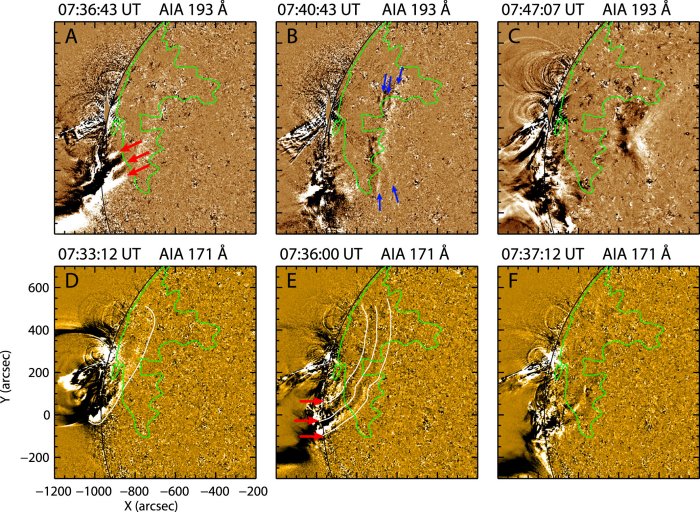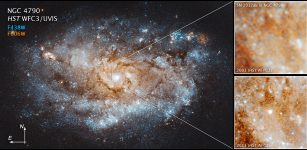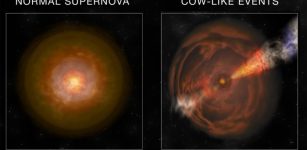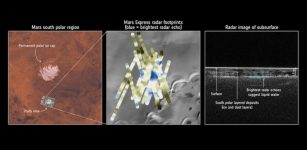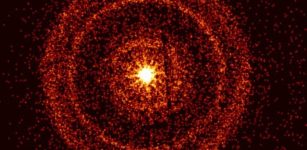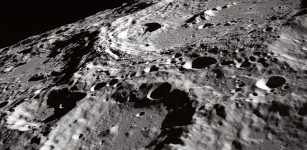Solid Evidence Of Coronal Waves Excited By Flares – Found
Eddie Gonzales Jr. – MessageToEagle.com – Researchers led by Dr. Zhou Xinping from Yunnan Observatories of the Chinese Academy of Sciences and their collaborators have found solid evidence of coronal waves excited by flares.
Their study – published in The Astrophysical Journal Letters – implies that the broad extreme-ultraviolet (EUV) wave train, including multiple wavefronts, should be driven by some nonlinear energy release processes in the accompanying flare.
The AIA 193 Å (a)–(c) and 171 Å (d)–(f) running-difference images show the evolution of the wave train. The white curves in panels (d) and (e) tracing the wavefront are added to visualize the wave evolution, which is drawn by connecting a sequence of measurement points. The red and blue arrows point to the wavefronts at the different evolutionary stages. The closed region marks the lunate CH boundary. Credit: The Astrophysical Journal Letters (2022). DOI: 10.3847/2041-8213/ac651e
It is generally believed that the single, diffused, and bright disturbance is a fast-mode piston shock and bow shock driven by a coronal mass ejection (CME)’s expansion.
Although this scenario can explain many observational features of the large-scale coronal waves, it is hard to distinguish whether a particular EUV wave is driven by a CME or ignited by a flare because the CME acceleration phase generally synchronizes with the flare’s impulsive phase.
Using the high spatio-temporal imaging observations from Solar Dynamics Observatory/Atmospheric Imaging Assembly (SDO/AIA), Zhou Xinping and his collaborators found that a broad EUV wave train composed multiple large-scale wave fronts. This wave train is difficult to explain using the CME lateral expansion theory.
They found that the physical parameters of the wave train, such as speed, amplitude, and energy flux were consistent with the classical large-scale EUV wave.
Meanwhile, the analysis result showed that the CME acceleration phase’s beginning time was behind the first wave front’s appearance. In contrast, the beginning time of the wave train was slightly behind the onset of the accompanying flare. Combined with the above observational fact and the common period between the accompanying flare and wave train, the researchers proposed that the flare rather than the CME triggered the wave train.
This study may provide a reliable case for supporting the flare-driven mechanism of the EUV waves. It also provides the first evidence of the interference effect of EUV waves, suggesting the true wave nature of the observed disturbance.
Written by Eddie Gonzales Jr. – MessageToEagle.com Staff

